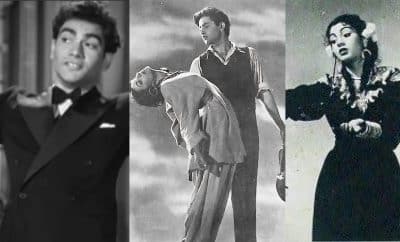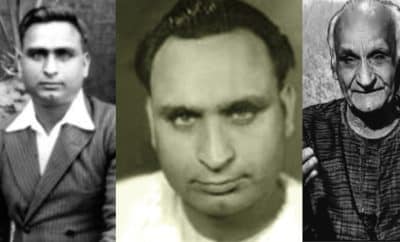Song Sketch
Phailee Hui Hain – House No 44 – A Waltz With Nature
Time spent with nature is never wasted. Gazing at the sky, tall trees, mountains, rivers, is a dose of soothing comfort. The serenity calms your nerves, inspires, reflects and heals. There’s a therapy in Japan called Shinrin-Yoku which is translated to English as Forest Bathing, meaning – taking in the forest atmosphere during a leisurely walk. It is a therapy that was developed in Japan during the 1980s, becoming a cornerstone of preventive health care and healing in Japanese medicine. Its main feature is to wander aimlessly in the woods, leaving behind all the expectations and goals. There are now 44 accredited Shinrin-Yoku forests in Japan.
Lose your mind and find your soul. Nature is an antidote to all the poisonous stress, load and unpleasant things around us. You just have to lose yourself in its company to find peace. Because peace is all you need at the end of the day.
Nimmo (Kalpana Kartik) in House No.44 (1955), is looking forward to a peaceful future with Ashok (Dev Anand). Severe conditions and circumstances have made them both work for a goon called Kaptaan (K N Singh). But one fine day they realize their mistake and decide to give up the life of crime and begin anew. Anticipating a peaceful, blissful future with her beloved Ashok, Nimmo slips into a daydream of paradise. The Sitar along with a heavenly aalap by Lata Mangeshkar helps her transport to a different world of the promised land.
Phailee hui hain sapnon ki baahein
Aaja chal de kahin duur
Wahi meri manzil, wahi teri raahein
Aaja chal de kahin duur….
A wonderful combination of cellos and alto clarinets gives a timeless vintage feel to the song. Lata Mangehskar’s voice in the 1950s was as if preserved in sugar. Then there are those unmistakable Chinese blocks, rhythm Guitars, violins and the tinkling of the triangle. And if the music is by S D Burman, the flute has to be there.
Jhoola dhanak ka dheere dheere hum jhoolein
Ambar toh kya hai taron ke bhi lab chhoolein
Masti mein jhoole aur sabhi gham bhoole
Dekhe na pichhe mud ke nigahein,
Aaja chal de kahin duur…
Dekhe na pichhe mud ke nigahein….Sahir’s way of saying – forget the past. Nimmo doesn’t want to look back at the dreadful past but soar high and stay aloft with happiness and pleasures of life.
How delicately Sahir waltzes with the words. He has made a swing out of a rainbow (dhanak). To represent a colourful life Nimmo has been dreaming of. Ready to touch the skies along with all the twinkling stars, forgetting all the worries behind. The song is a beautiful example of a waltz. Sahir waltzes with his words, Lata’s voice is waltzing with all the instruments (their waltz begins with a lovely sitar piece) Kalpana Kartik is waltzing with her dreams and S D Burman’s music with nature and our hearts and mind.
The word Waltz comes from the Deutsche verb Walzen, which describes the turning or rotating movement characteristic of the dance. That’s exactly what the song does to us. Going arm in arm with profound nature. A song which not only looks like but also sounds like a dream.
A waltz which seems to be inspired by a folk song, a typical S D Burman feature. This song seems to be inspired by a Himachali folk song – Maaye ni miriye which has now become very popular with so many singers attempting it. In recent years singers like Mohit Chauhan, Harshdeep Kaur have made it very popular.
Another song based on the same tune –
Phailee hui hain sapnon ki baahein, once in a while, featured on the television in Chitrahaar or Chhayageet, which were a weekly delight. From then on, whenever I hear this song, I reach amidst nature, a la Kalpana Kartik. Waltzing around the green pastures with a tree here, a bush there, giving the much needed shelter to my soul. Enveloped in the crisp mist, humming away the first stanza –
Oonchi ghata ke saye taley chhip jayein
Dhundhli fiza mein kuchh khoye kuch payein
Saanson ki lay par koi aisi dhun gayein
De de jo dil ko dil ki panahein
Aaja chal de kahin duur…




Madhur
September 19, 2024 at 12:10 pm
This is such a beautiful write up, paying tribute to all those involved in creating a heavenly number that I can listen to anytime, anywhere. Love how you’ve expanded on the word ‘Waltz’, it truly meanders through all aspects of the song that has the power to transport. And I stand transported!
‘Time spent with nature is never wasted…giving the much needed shelter to my soul’ – so well said ❤️
Pratik Majumdar
September 19, 2024 at 2:49 pm
What a wonderful writeup this is. Loved it as always